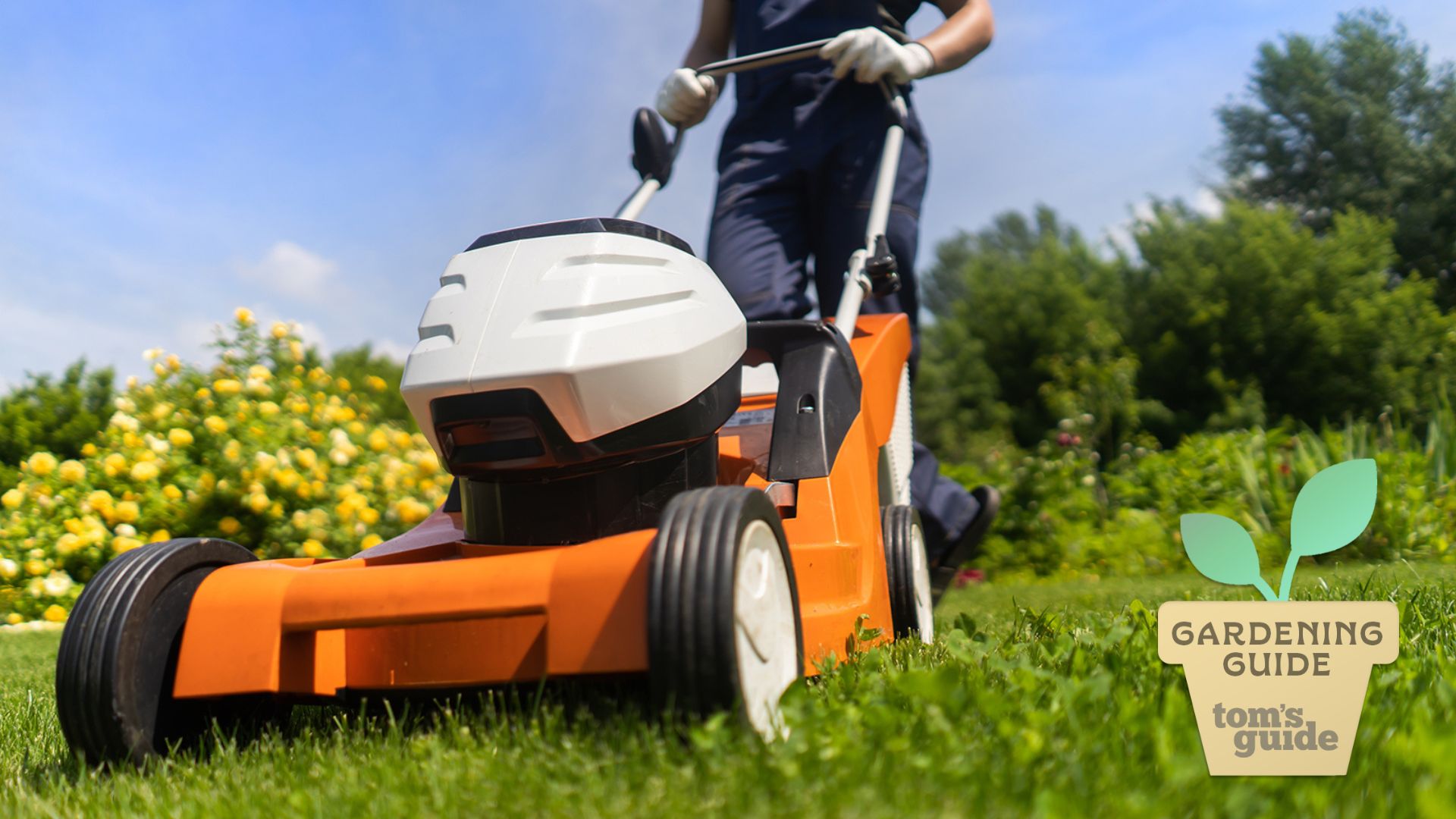7 essential lawnmower tips to help keep it running like new
Regular lawnmower maintenance keeps it running efficiently and extends its lifespan
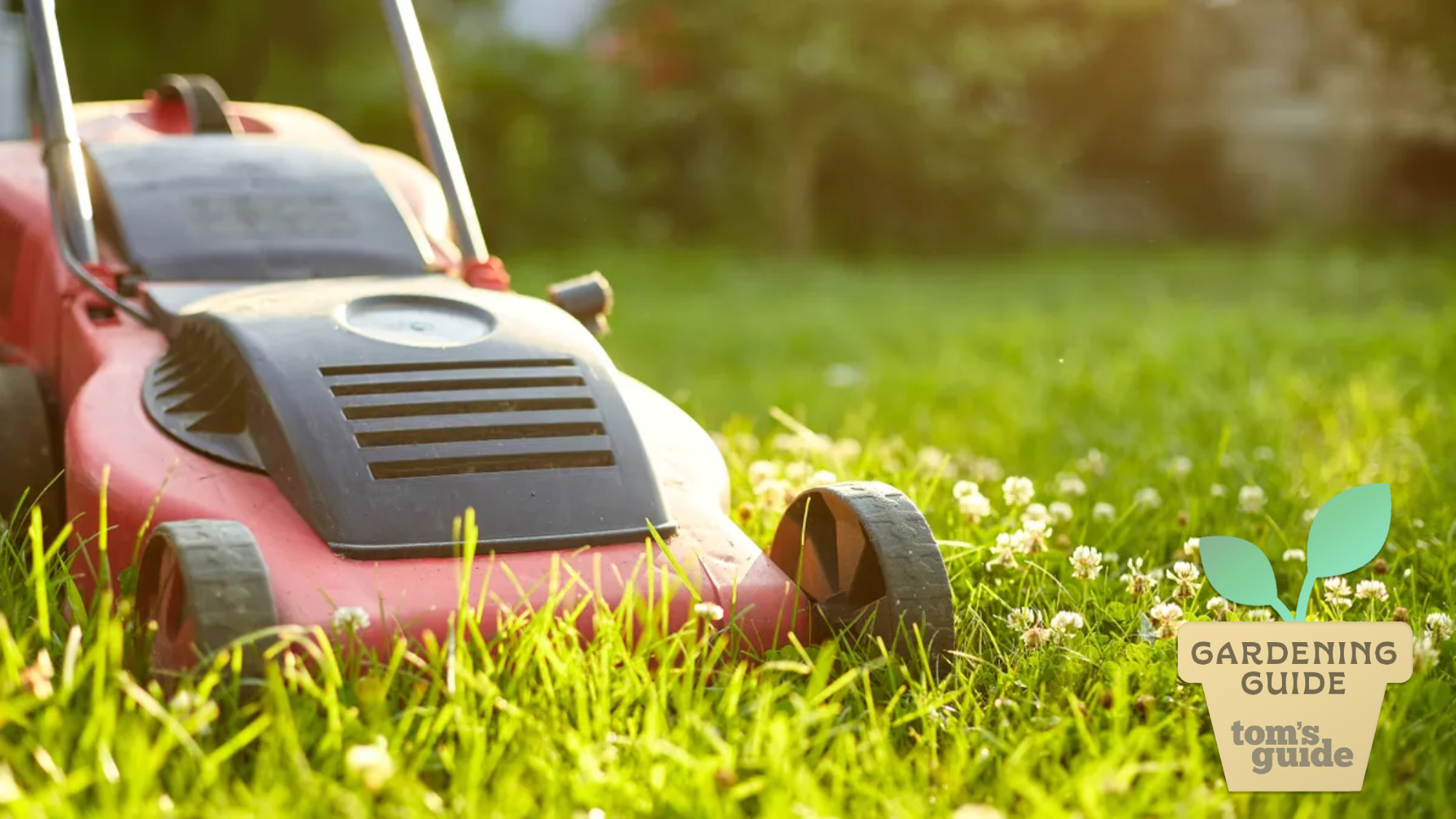
A properly maintained lawnmower doesn't just cut better. It lasts longer, runs more efficiently, and saves you money in the long run.
Many homeowners overlook basic maintenance until their mower sputters to a stop mid-season, leading to costly repairs or premature replacement. The good news is that keeping your lawnmower in top condition doesn't require advanced mechanical skills or expensive tools.
With simple, regular attention, you can extend your mower's lifespan whether you own a traditional gas model, an electric version, or a robotic mower. The key lies in understanding what maintenance your specific type requires.
This guide walks you through the seven essential maintenance practices that will keep your lawnmower performing at its best for years to come, right on time for Gardening Week!
Why does regular cleaning matter?
Consistent maintenance is the cornerstone of lawnmower longevity. Ideally, you should clean your mower after every use, but at minimum, perform a thorough cleaning once per year before storage.
This prevents the buildup of grass clippings and soil underneath the deck, a combination that forms a corrosive, slimy mixture that accelerates wear on metal components.
Regular cleaning also prevents performance issues. Clogged ventilation slits restrict airflow, causing gas engines to run inefficiently and electric motors to overheat.
Sign up to get the BEST of Tom's Guide direct to your inbox.
Get instant access to breaking news, the hottest reviews, great deals and helpful tips.
Clean blades cut more effectively, reducing the strain on your mower's engine and producing a healthier, more even lawn.
Think of maintenance as an investment — a few minutes after each mowing session can add years to your equipment's useful life.
1. Safety precautions before cleaning
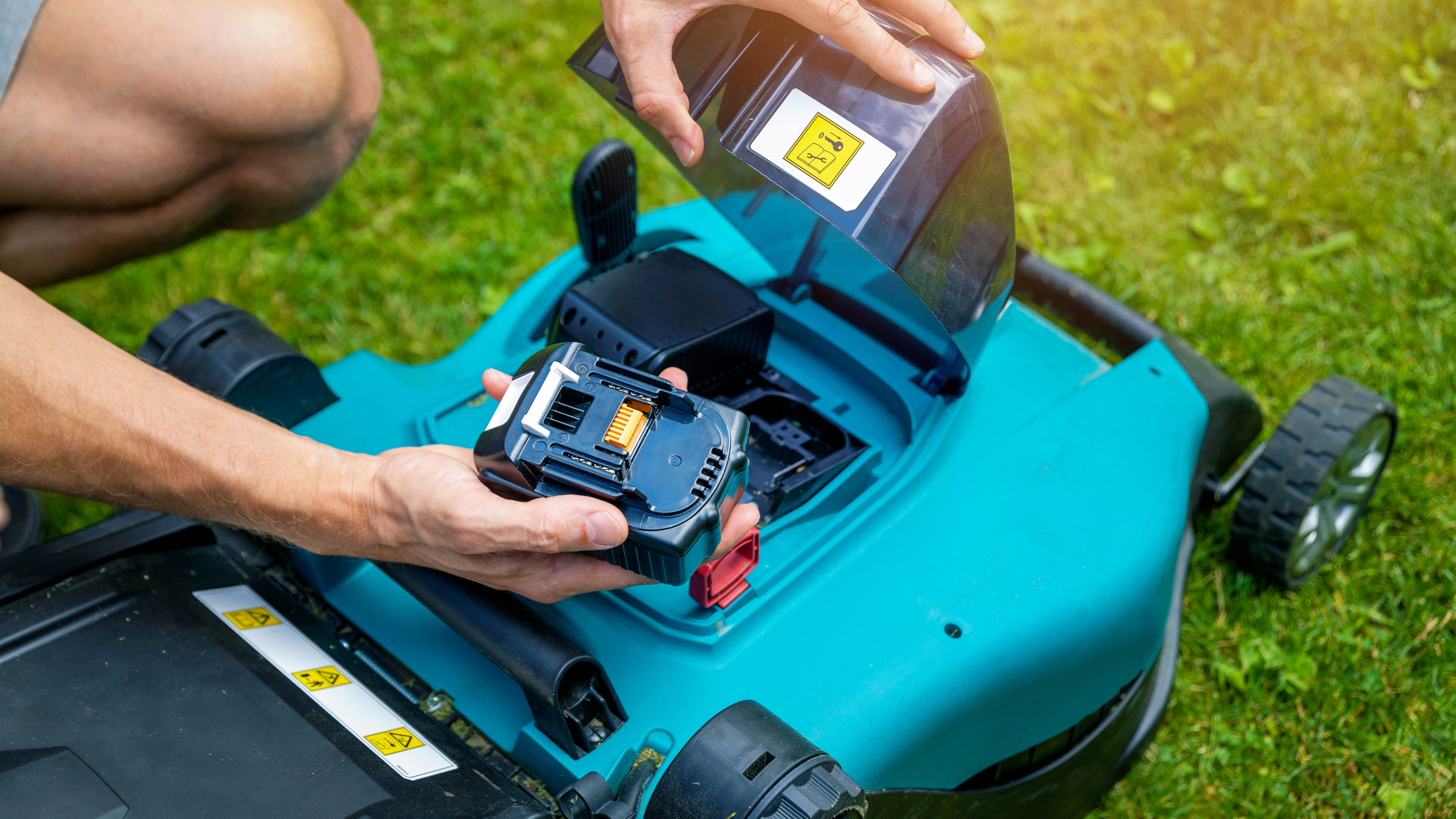
Before cleaning any lawnmower, you must take appropriate safety measures. For electric models, always unplug the power cord from the outlet to prevent electrical hazards.
If you have a battery-operated model, remove the battery completely from the unit. Gas-powered mowers require disconnecting the spark plug connector to ensure the engine cannot accidentally start.
These precautions are essential to prevent unexpected startups that could result in serious injuries while you're working on the machine.
2. Perform a basic clean
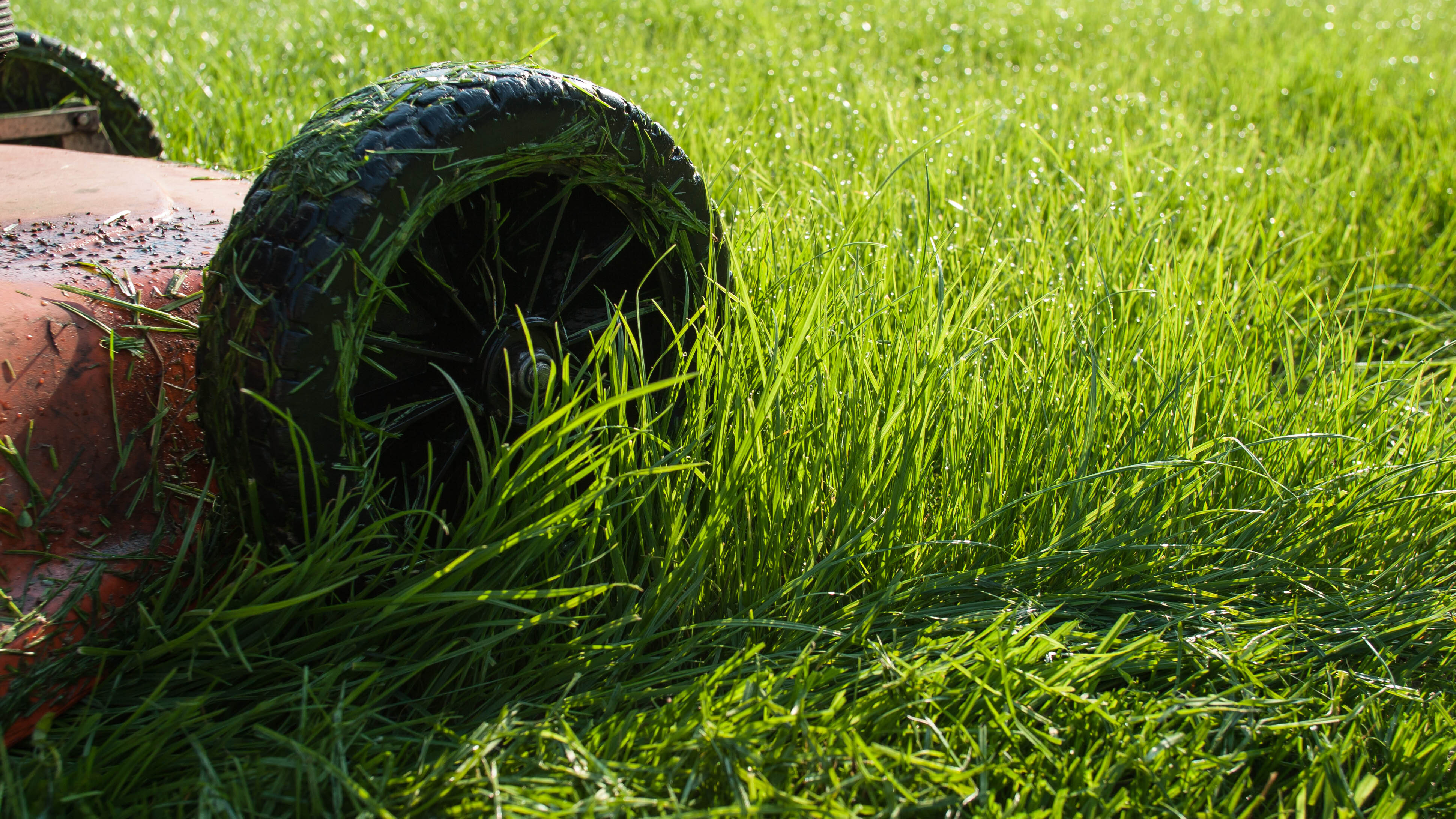
After each mowing session, position your lawnmower on a flat surface and use a stiff-bristled brush to remove grass clippings and dirt from the cutting deck.
It's important to never use metal tools for this task, as they can scratch the surface or chip the paint, creating opportunities for rust to develop.
For stubborn debris, a plastic scraper or dedicated lawnmower cleaning tool works effectively without damaging the finish.
For the topside of the mower, use a hand brush to sweep away dust, pollen, and loose grass. Following this by using a damp cloth will restore the finish and prevent corrosive materials from damaging the housing.
While cleaning, take a moment to inspect the blade for damage or excessive wear. Remember to never handle blades directly—always use a thick glove for protection if adjustment is needed.
3. Maintaining gas-powered mowers
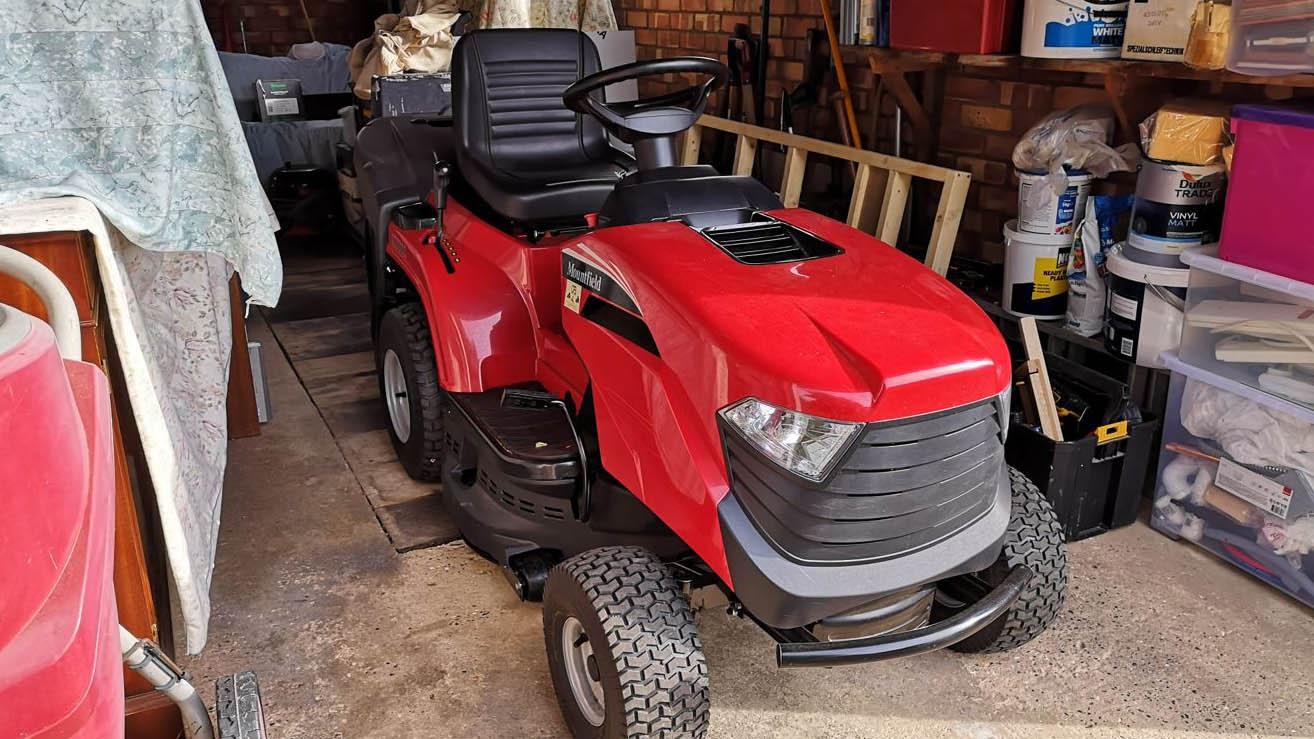
Gas mowers require the most maintenance but typically offer the longest service life when properly cared for.
One critical rule is to never lay a gas mower on its side for cleaning. If you need to access the underside, tip it backward with the handle touching the ground.
If side positioning is absolutely unavoidable, ensure the air filter faces upward to prevent oil from saturating it.
The air filter needs cleaning approximately every two months during mowing season. To do this, carefully remove the filter after locating it under its protective cover. Gently tap the filter on a flat surface to remove loose dirt, then use a fine brush for remaining debris.
Paper filters should never be cleaned with compressed air as this can damage the filter material. When a filter becomes heavily soiled, replacement is better than attempting to clean it.
Regular oil and fuel maintenance is also essential. You should check oil levels before each use and change the oil according to the manufacturer's recommendations.
Before extended storage, add fuel stabilizer to the tank. For seasonal storage, either drain the fuel completely or run the engine until the tank is empty to prevent fuel degradation issues.
4. Caring for electric and battery-powered mowers
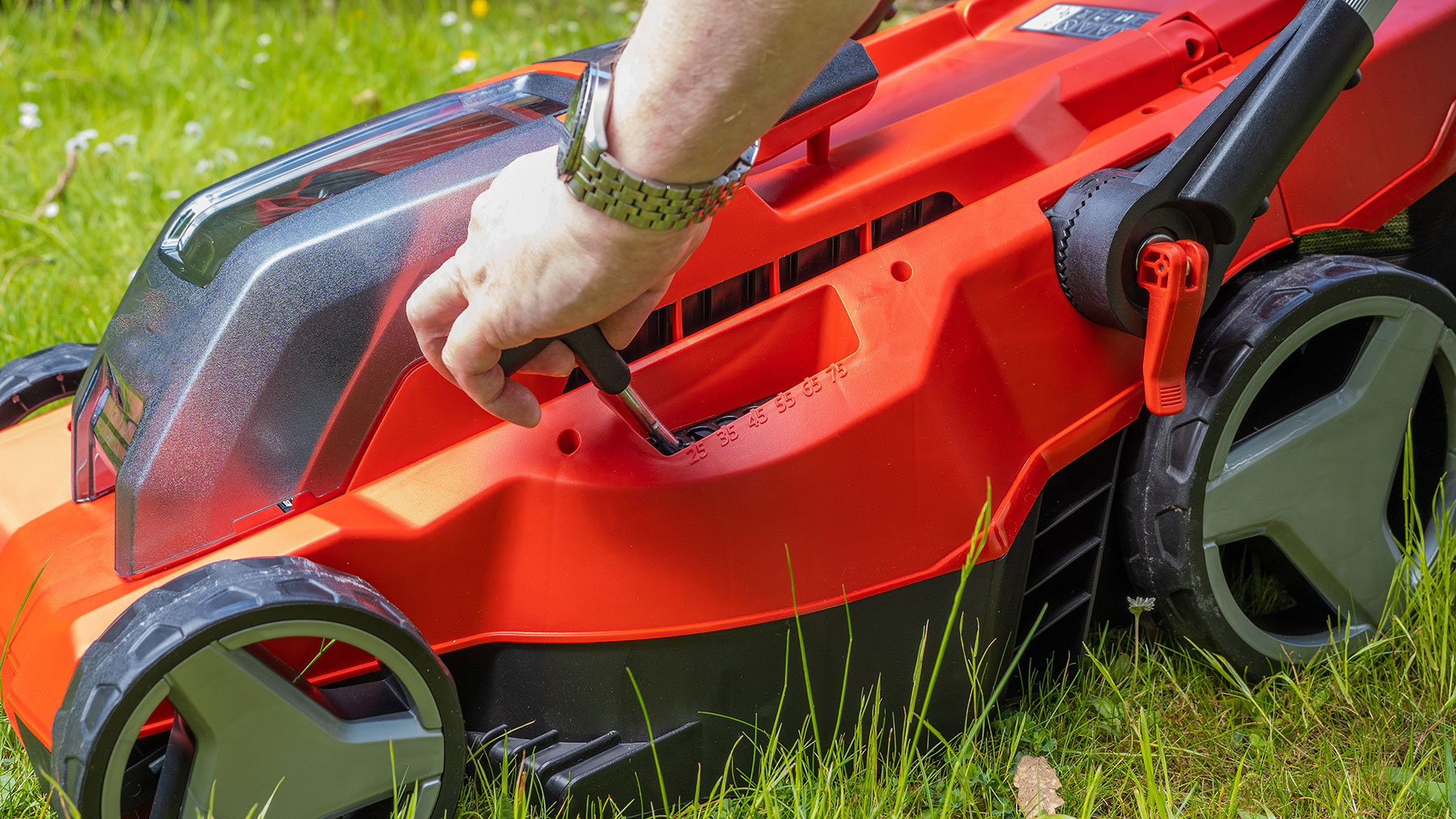
Electric mowers generally require less maintenance but still need regular attention. After brushing away debris from the deck, you can use a garden hose to rinse the underside.
Some models include a dedicated hose connection specifically for this purpose. While cleaning, ensure all electrical components remain dry and allow the mower to dry completely before storage.
Battery care is particularly important for these models. Always remove batteries before cleaning or storage and place them in a cool, dry location.
For seasonal storage, maintain batteries at approximately 50% charge rather than fully charged or depleted. It's also good practice to check battery contacts periodically for corrosion, cleaning them gently with a dry cloth if needed.
5. Special care for robotic mowers
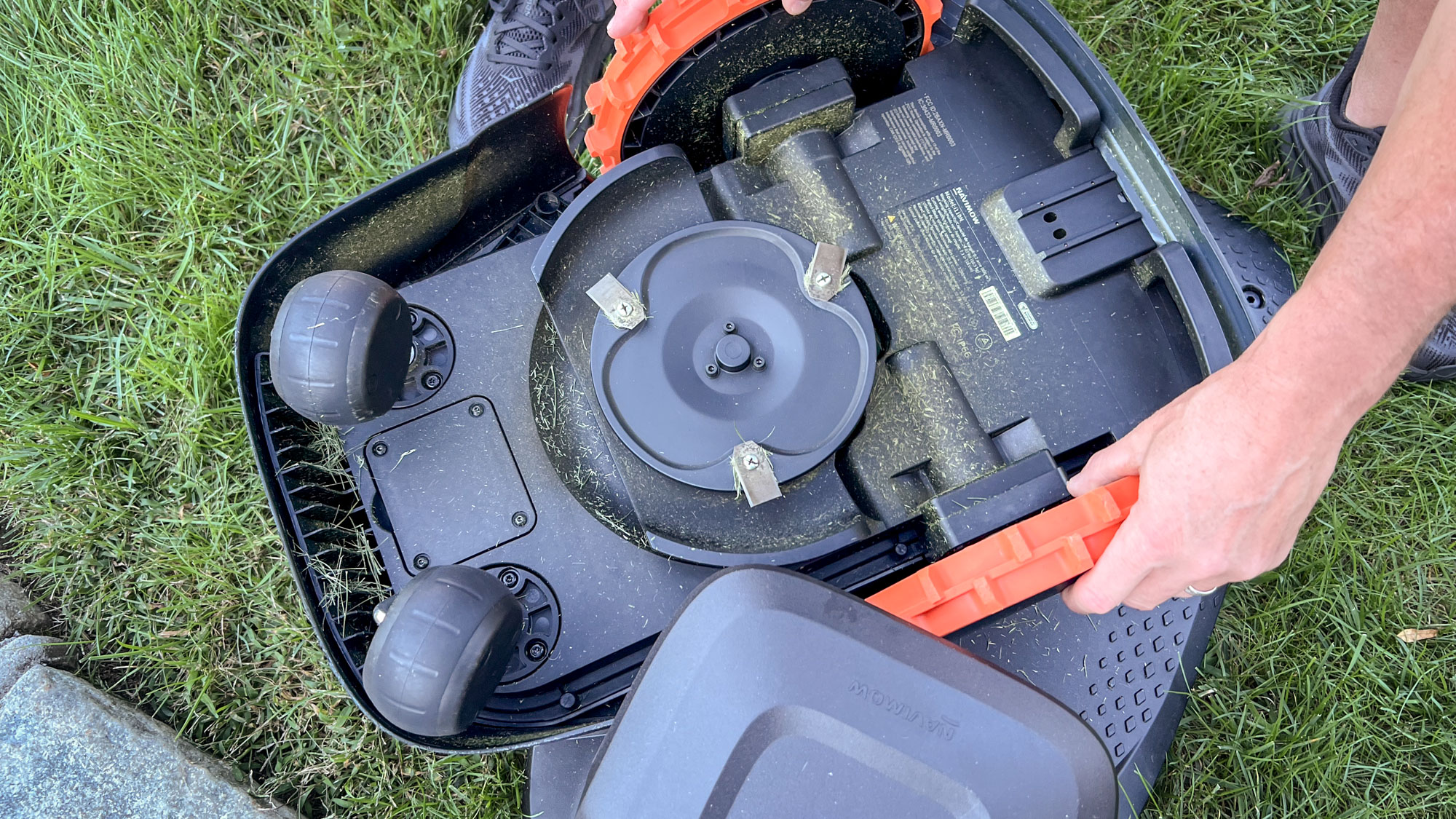
Robotic mowers require specific attention to protect their sophisticated electronic systems.
Clean these units with a damp cloth rather than spraying them directly with water. These mowers are only designed to be water-resistant from above, so never spray from underneath as this can damage internal components.
For thorough cleaning, you can remove the chassis according to the manufacturer's instructions and use a soft brush or compressed air to clean internal areas.
Always ensure the unit is completely dry before returning it to service. The charging contacts should be kept clean and free of debris to ensure proper charging.
6. Perform a deeper clean
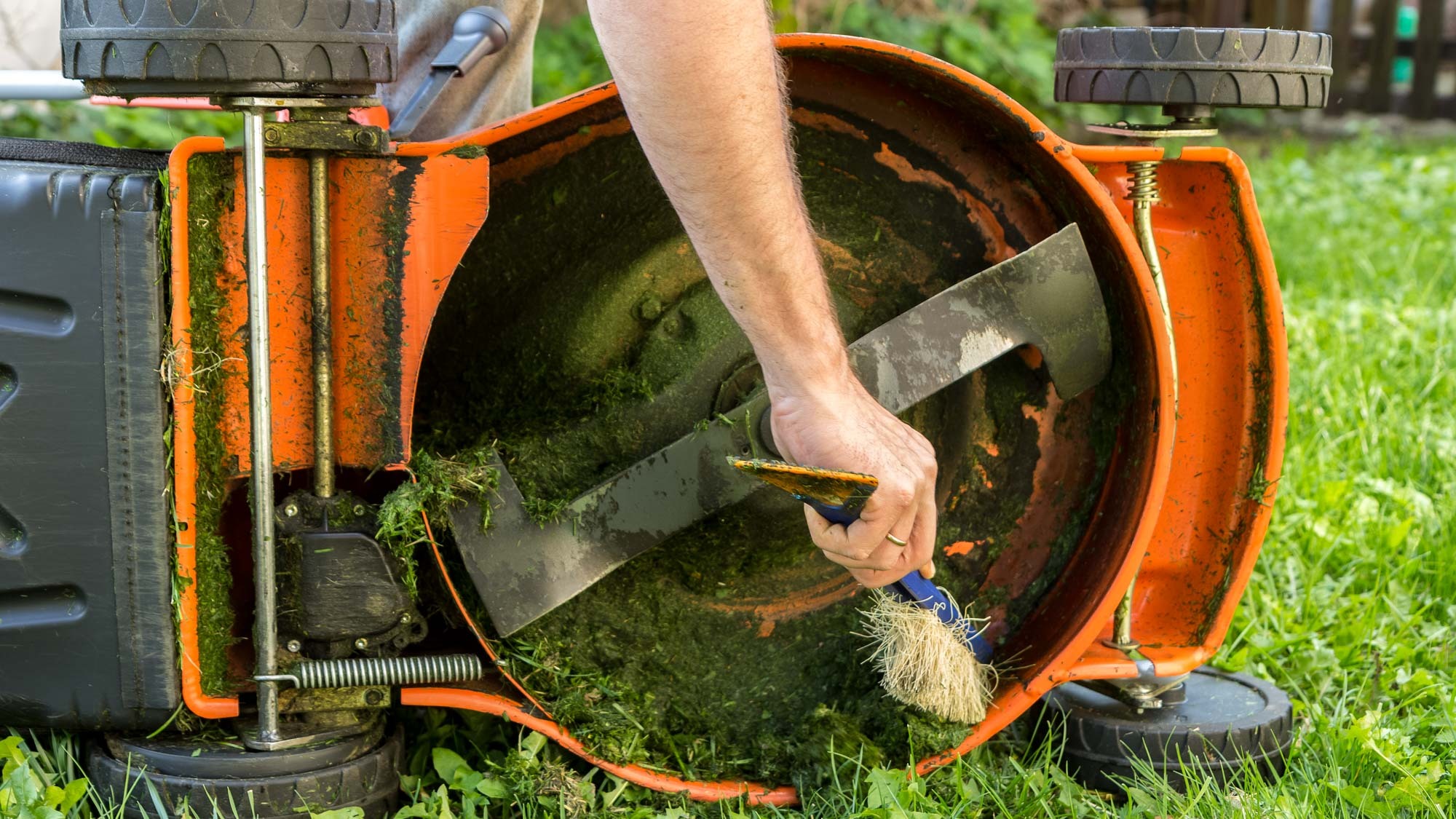
Twice per mowing season, perform more intensive maintenance on your lawnmower. This includes thoroughly cleaning the wheels to remove built-up grass and mud from wheel housings and axles.
The grass collection bag or bin should be emptied and cleaned with a brush, and rinsed if the material allows it.
Pay special attention to hard-to-reach areas like the narrow spaces between the motor and chassis, using long-handled brushes to access these spots.
This is also the time to sharpen or replace the blade as needed, since dull blades tear grass rather than cutting cleanly, which can stress both the lawn and the mower.
Inspect all cables, belts, and electrical connections for wear or damage during this seasonal maintenance.
7. Maintain the cutting blades
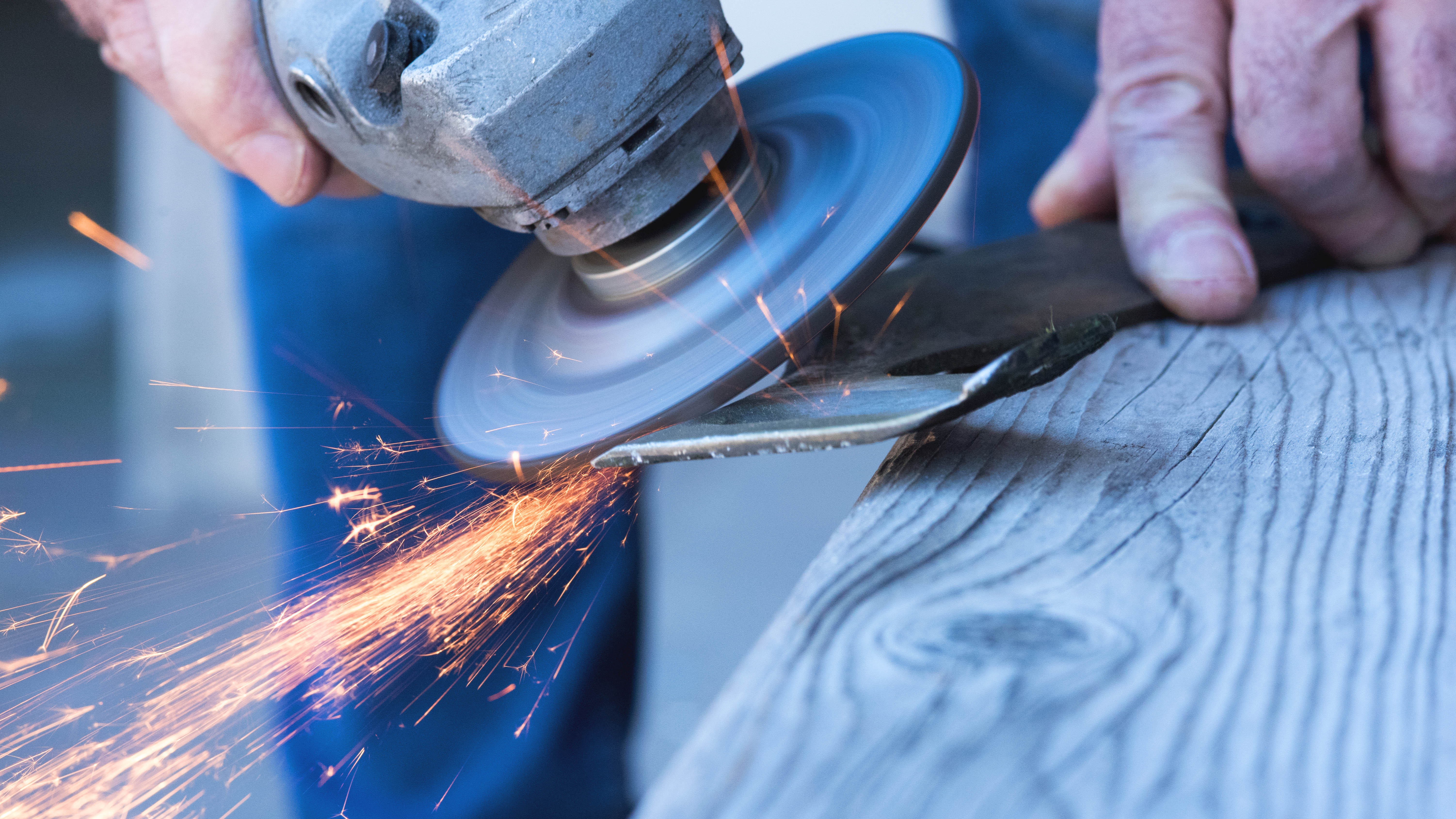
The cutting blade is perhaps the most critical component of your lawnmower, and keeping it in good condition ensures a clean cut and reduces strain on the engine.
Inspect the blade regularly for signs of damage, bending, or excessive wear. A blade should be sharpened when it begins to tear grass rather than slice it cleanly.
For blade maintenance, first ensure the mower cannot start by disconnecting the power source as described earlier. Then securely prop the mower to access the blade safely.
Use a wrench of the appropriate size to remove the mounting bolt (usually by turning counterclockwise), and carefully remove the blade.
You can sharpen the blade using a bench grinder, file, or blade sharpening kit, maintaining the original angle of the cutting edge. Alternatively, many hardware stores offer blade sharpening services for a nominal fee.
When reinstalling the blade, ensure it's properly balanced and tighten the mounting bolt to the manufacturer's specifications.
Now you've learned 7 essential lawnmower tips to help it keep running like new, why not check out some more useful gardening articles?
Check out 7 tips to banish weeds from your lawn that won't harm the grass and how to clean gardening gloves and make them last longer. And if you have a deck, here's how to get it ready for spring.

Kaycee is an Editor at Tom’s Guide and has been writing for as long as she can remember. Her journey into the tech world began as Cazoo's Knowledge Content Specialist, igniting her enthusiasm for technology. When she’s not exploring the latest gadgets and innovations, Kaycee can be found immersed in her favorite video games, or penning her second poetry collection.
You must confirm your public display name before commenting
Please logout and then login again, you will then be prompted to enter your display name.
